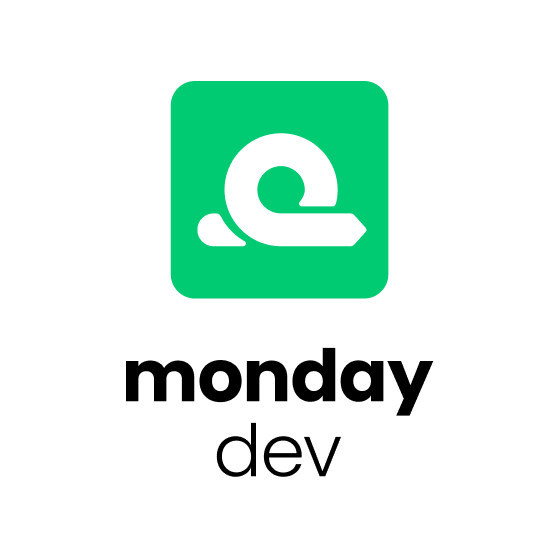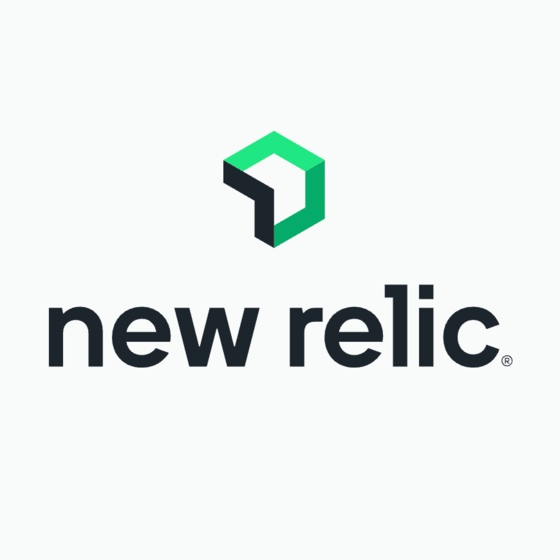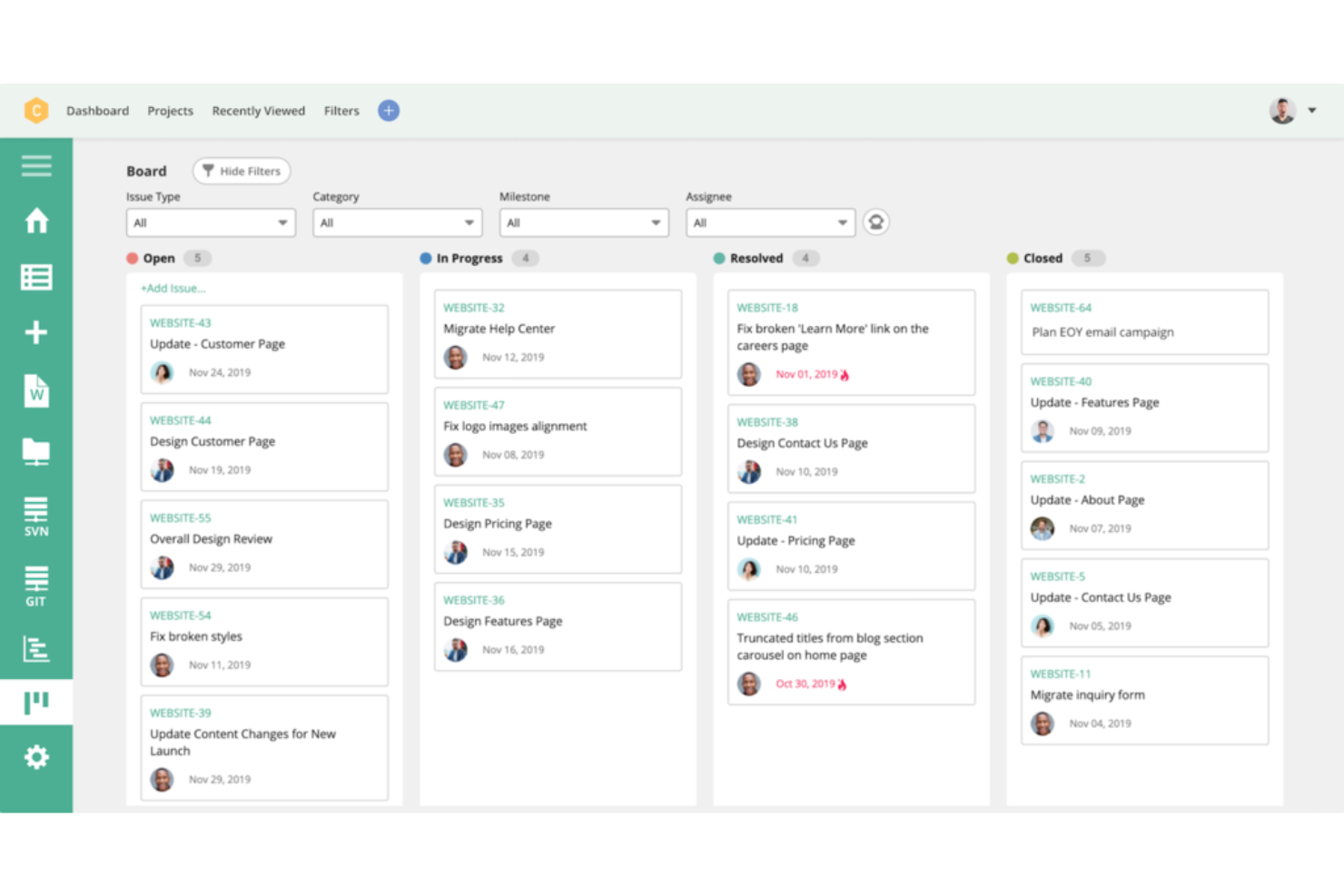10 Best Free Bug Tracking Software Shortlist
Here's my pick of the 10 best software from the 20 tools reviewed.
Our one-on-one guidance will help you find the perfect fit.
Managing bugs effectively is essential for delivering reliable software, but finding a bug tracking tool that meets your needs—without exceeding your budget—can be frustrating. Free options often come with trade-offs, whether it’s missing features, limited integrations, or scalability issues that make it difficult to support a growing development team. Without a reliable tracking system, minor bugs can slip through the cracks, leading to delays, frustrated users, and technical debt that only gets harder to manage over time.
I’ve worked with a range of free and open-source bug tracking tools, testing how well they handle issue tracking, workflow integration, and team collaboration. In this guide, I’ll break down the best free options available, highlighting their strengths, limitations, and the kinds of development teams they’re best suited for—so you can find a solution that fits your workflow without unnecessary compromises.
What is Free Bug Tracking Software?
Free bug tracking software is a tool that allows teams to log, manage, and track software bugs via issue tracking software at no cost. These tools enable the systematic organization and prioritization of software defects, facilitating their resolution. They are essential in the software development process for maintaining the quality and reliability of software projects.
The benefits and uses of free bug tracking software include cost savings for teams or individual developers, especially those with limited budgets. They improve software quality by ensuring efficient management and resolution of bugs. These tools enhance collaboration and communication within teams, providing transparency in the bug management process. By streamlining the tracking of defects, free bug tracking software contributes to increased productivity and helps maintain a high standard of software development, even for small-scale projects.
The 10 Best Free Bug Tracking Software Summary
| Tool | Best For | Trial Info | Price | ||
|---|---|---|---|---|---|
| 1 | Best for bug tracking templates | Free trial available | From $8/user/month | Website | |
| 2 | Best for quick visual bug reporting | Free plan available | From $7/user/month | Website | |
| 3 | Best for creating and organizing customized workflows | Free plan available | From $35/month | Website | |
| 4 | Best for consolidating error notifications | Free plan + demo available | Pricing upon request | Website | |
| 5 | Best for cross-functional work tracking | 30-day free trial | From $10.99/user/month (billed annually) + free plan available | Website | |
| 6 | Best for instant replays of bugs | Free plan available | From $10/user/month | Website | |
| 7 | Best no-code free bug tracking software | Free plan available | From $100/user/month (billed annually) | Website | |
| 8 | Best bug tracking software for mobile apps | 14-day free trial + free demo available | From $249/month (billed annually) | Website | |
| 9 | Best for a distributed workforce | Free plan available | From $4/user/month | Website | |
| 10 | Best for effective time management | 30-day free trial | From $25/month | Website |
-

Docker
Visit WebsiteThis is an aggregated rating for this tool including ratings from Crozdesk users and ratings from other sites.4.6 -

Pulumi
Visit WebsiteThis is an aggregated rating for this tool including ratings from Crozdesk users and ratings from other sites.4.8 -

GitHub Actions
Visit Website
Overviews of The 10 Best Free Bug Tracking Software
Here is my list of the best free bug tracking software, including a few bonus options.
monday dev is a product development platform that serves as a central hub for managing the entire product lifecycle, from initial planning to final execution. This tool is particularly beneficial for software development teams, project managers, and quality assurance testers who want to revamp processes for handling tasks, monitoring progress, and communicating with others.
Why I picked monday dev: As a bug-tracking software, monday dev stands out for its ready-made templates. These templates offer pre-configured workflows and settings that help teams quickly implement efficient bug-tracking practices without extensive setup.
Teams can view bugs based on status, priority, age, and more, with the option to also view tasks in a Kanban board. monday dev offers a 14-day free trial period.
monday dev Standout Features and Integrations
Standout features: monday dev offers automation capabilities to minimize manual tasks by auto-assigning issues, notifying team members, and updating statuses based on predefined rules. Additionally, its visual tools, including Kanban boards and Gantt charts, offer real-time views of bug statuses and project timelines.
Integrations include GitHub, Outlook, Slack, Google Drive, Trello, Jira, Salesforce, Microsoft Teams, and more.
Pros and cons
Pros:
- Flexible for different stages of the development cycle
- Templates with pre-configured bug tracking workflows
- Multiple views for viewing issues and tasks
Cons:
- Can get costly for expanding teams
- No free plan available, just a free trial
Userback provides a powerful yet simple way to collect visual bug reports and user feedback, helping teams quickly identify and resolve issues. It’s especially useful for distributed and remote teams that need fast, visual input from users. The tool offers an embeddable feedback widget, browser extension, and a Kanban-style feedback board, allowing teams to efficiently manage and prioritize bugs in real-time.
Why I picked Userback: I picked Userback because it makes it easy for both technical and non-technical users to report bugs visually. With Userback, users can annotate screenshots, record videos, and submit detailed reports directly from the website. These visual reports, combined with automatic session replays and console logs, provide all the context developers need to resolve bugs quickly. The tool’s simple feedback collection and session replay features make it ideal for fast-paced teams.
Userback Standout Features and Integrations
Standout features: Userback allows you to capture visual feedback through annotated screenshots and video recordings, providing detailed bug reports in seconds. The session replay feature gives developers a complete view of the user’s journey leading up to the issue, which is key for understanding complex bugs. Userback also includes a Kanban-style board that helps teams track feedback and manage resolutions efficiently.
Userback's feedback automation saves time by auto-assigning reports and setting priorities. Although the free plan limits feedback access to seven days, it still offers a fast, practical solution for quick-turnaround projects.
Integrations include Jira, Asana, Wrike, Webhook, Slack, Microsoft Teams, Notion, Trello, GitHub, monday.com, GitLab, Intercom, Zendesk, ClickUp, WordPress, Linear, Basecamp, Azure DevOps, and Zapier.
Pros and cons
Pros:
- Supports visual feedback with screenshots, annotations, and video
- Offers public roadmaps and feature voting
- Centralized dashboard for organizing and prioritizing feedback
Cons:
- Performance can be affected in certain web environments
- Occasional issues with data export and reporting
Backlog provides project management, code management, and bug tracking capabilities. Trusted by over 18,000 companies across the globe, this tool comes with bug and issue tracking features that enable you to track and resolve bugs seamlessly.
Why I picked Backlog: Backlog makes managing bugs easy by allowing you to create and customize your workflows. It lets you organize tasks in ways that are easy to keep track of. For instance, you can nest subtasks under parent tasks, making it easy to get things done with minimal confusion and errors.
Backlog allows you to create custom fields that fit your team’s needs and preferences. With the versions and milestones tracking capability, you can arrange and keep track of every release and update.
Backlog Standout Features and Integrations
Standout features: Backlog provides issue templates, which help you standardize issue creation and the bug tracking process. You can use automation to get things done faster. The tool allows you to add issues through email and set up automatic issue creation using an email address. There is also a good notification capability that lets you keep team members and stakeholders in the loop.
Integrations include Jira, Redmine Importer, Typetalk, Cacoo, Slack, Jenkins, Webhook, Microsoft Teams, Google Chat, and LambdaTest.
Pros and cons
Pros:
- You can automate issue creation
- Good notifications
- Customizable
Cons:
- UI needs improvement
- Customer support response is slow at times
New Relic is an observability platform that assists engineers in monitoring, debugging, and enhancing their technology stack. It provides a suite of tools including application performance monitoring (APM), serverless monitoring, security features, digital experience monitoring, and artificial intelligence.
Why I picked New Relic: One of the standout features of New Relic is its errors inbox, which consolidates error notifications from across the entire stack into a single, manageable location. This feature allows developers to proactively detect, triage, and resolve errors before they impact end-users.
By grouping similar errors and providing detailed context, such as stack traces and error attributes, the errors inbox facilitates quicker root cause analysis and resolution.
New Relic Standout Features and Integrations
Standout features: Other features offered by New Relic include artificial intelligence to provide actionable insights and automate routine tasks, enhancing operational efficiency. APM 360 offers comprehensive application performance monitoring, ensuring applications run smoothly and efficiently. Furthermore, infrastructure monitoring provides detailed insights into the performance and health of infrastructure components,
Integrations include Amazon Web Services, Microsoft Azure, Google Cloud Platform, Kubernetes, Prometheus, NGINX, MySQL, Redis, Apache, and RabbitMQ.
Pros and cons
Pros:
- Provides robust alerting and notification features
- Users can create customizable dashboards to visualize data
- Real-time tracking and monitoring of applications
Cons:
- Initial configuration can be complex and time-consuming
- May be pricey for small businesses
Asana provides everything you need to track your debugging tasks and keep your team organized and focused on the major goal. The tool is great for companies with remote and distributed teams; it provides task management and collaboration capabilities that help teams work together effectively.
Why I picked Asana: I’m recommending Asana as one of the best defect tracking tools because it’s designed to help you manage complex bug tracking tasks easily. It features a list view, which lets you organize and assign tasks. With lists, each team knows exactly the tasks to accomplish, what is expected of them, and when to complete tasks. Asana streamlines everything and provides the clarity needed to keep track of your debugging activities.
Asana Standout Features and Integrations
Standout features: Asana allows you to streamline your reports and get real-time insights into what your teams are doing. Asana Boards make things a lot easier by helping you focus on tasks currently in the pipeline. Boards help you get a detailed overview of what’s going on and let you know where there are frictions in your workflow.
Asana stands out with its workflow automation capabilities. You can put routine activities like assigning tasks and setting due dates on autopilot, which provides the space you need to focus on other important tasks.
Integrations include Salesforce, Gmail, OneDrive, Zapier, Tableau, Sharepoint, Outlook, Office 365, Box, and Instagantt.
Pros and cons
Pros:
- Great reporting
- Automation capabilities
- Easy to use
Cons:
- More workflow customization needed
- More guides for new users are required
Jam is a bug-tracking tool that simplifies the process of reporting and capturing bugs by allowing users to report bugs with a single click. It compiles all the necessary information that engineers need to fix issues, including device and browser details, console logs, network logs, repro steps, and backend tracing.
Why I picked Jam: The tool can capture events that have just occurred on the user's screen, providing an instant replay of the bug. It then automatically records the steps to reproduce a bug, which helps users understand what happened without the need to manually replicate the issue and write down the steps.
Furthermore, users can annotate, blur, edit, and share the captured bug reports. This functionality allows for clear communication and collaboration among team members.
Jam Standout Features and Integrations
Standout features: Aside from the instant replay and automatic recording of bugs, Jam offers a voice recording feature for real-time explanations with video recordings. The tool even supports mobile view inspections. Jam also has JamGPT, an AI debugging assistant, to help engineers receiving bug reports fix code more efficiently.
Integrations include Asana, ClickUp, Figma, GitHub, Jira, Linear, Notion, Sentry, Slack, and more.
Pros and cons
Pros:
- AI debugging assistant
- One-click screen captures
- Instant replay of bugs
Cons:
- Session recordings limited to two minutes
- May lack advanced features
Caspio gives you access to drag-and-drop features you can rely on to manage and track your QA processes with ease. It allows you to build forms, reports, dashboards, and other things to track defects and deliver high-performance products.
Why I picked Caspio: It’s great for users that need a scalable tool that facilitates collaboration. Caspio allows users to collaborate on tasks effectively. It allows you to build interactive reports, which makes keeping tabs on your debugging tasks a lot easier. You can customize your bug reports to suit your requirements and present data in ways that are convenient for your team.
Caspio Standout Features and Integrations
Standout features that set Caspio apart include advanced charts and dashboards and workflow automation. There is an extensive chart library that enables you to create beautiful charts for visualizing data. Caspio’s dashboards come with user-driven filtering and drill-down features that empower you to make decisions based on real-time insights.
With Caspio, assigning tasks and tracking progress is a lot faster. This is due to its workflow automation capabilities. The tool lets you streamline operations by automating routine tasks.
Integrations: Caspio allows you to integrate with a wide range of tools, including Google Drive, Zapier, Microsoft 365, Box, Sogolytics, Twilio, Stova, FastField, LeadMaster, and APIANT.
Pros and cons
Pros:
- Flexible and customizable
- Free training
- 24/7 support and expert services
Cons:
- More tutorials needed
- A bit difficult for new users
Instabug is a bug management solution that empowers you to monitor, prioritize, and resolve bugs throughout the entire product development phase. It provides detailed bug reports with the important information you need to fix the issues.
Why I picked Instabug: It offers a mobile app bug tracking solution that lets you receive bug reports and feedback from testers and your users. The software allows you to get reports from testers during development; this helps you to get rid of defects that can impact your product after launch. Instabug takes the game to the next level by letting you receive performance feedback from users when your app is live.
Instabug Standout Features and Integrations
Standout features: Instabug has an in-app bug reporting feature that allows testers and users to seamlessly send feedback or report bugs by simply shaking their devices. From the app, they can send annotated screenshots, screen recordings, or voice notes to explain their experience with your app.
You can reply to users and automate your workflow with third-party integrations. Through in-app chats, you can communicate effectively with customers — request more information from users or inform them that an issue has been resolved.
Integrations include GitHub, Jira, Slack, Asana, Zendesk, Pivotal, Trello, Freshdesk, Basecamp, Zapier, and FrontApp.
Pros and cons
Pros:
- Comprehensive bug reporting
- Seamless in-app communication
- Get detailed logs and metadata
Cons:
- More customizations needed
- Customer support response time needs to be improved
GoodDay is a modern work management platform. It provides a range of work management capabilities that let you stay in control of your defect tracking processes. Its key capabilities include process management, team collaboration, task management, time tracking, analytics, and data management.
Why I picked GoodDay: I added this tool to the list because it makes the remote work model easier to implement. It comes with collaboration capabilities that remote workers need to work together as one productive team. With GoodDay, you can plan and collaborate on one platform.
GoodDay offers task management features that help you manage your bug tracking tasks effectively. You can assign tasks, share task attachments, add custom fields, organize tasks with tags, and track the progress of your tasks. In a nutshell, the tool provides everything you need to track bugs and ensure issues are resolved properly with no confusion.
GoodDay Standout Features and Integrations
Standout features include time management, data management, and advanced reporting and analytics. It offers a range of data management features to help you make good use of the information you gather in the course of QA. You can do bulk editing, create copies of existing items, drag and drop work items, filter information, and sort data according to your needs.
With the time management capability, you can easily keep track of time spent on your work items. The key time management features include a task timer, work schedules, daily timesheets, weekly timesheets, and project time reports.
Integrations include Google Drive, Dropbox, Google Calendar, Slack, Gmail, GitHub, Kanban Tool, Google Docs, and Google Workspace.
Pros and cons
Pros:
- Good support
- Flexible workflow
- Seamless integrations
Cons:
- Some processes or settings are complicated
- UI needs more colorful updates
CaseCamp is a project management software tool that features a range of capabilities, including resource management, budgeting, employee tracking, project roadmaps, time tracking, reporting functionalities, location tracking, and collaboration features. Its tracking feature helps you organize your workflow and keep track of the product debugging processes.
Why I picked CaseCamp: This software helps you organize people and keep them on the same page. It provides the tooling you need to track everyone as they perform their role and ensure your testers are working toward the common goal. CaseCamp makes communication and exchanging information with teams and stakeholders very easy and trackable.
Another thing I like about this tool is the time tracking feature. With this capability, you can set time limits for tasks and track your workers to ensure tasks are completed quickly and correctly.
CaseCamp Standout Features and Integrations
Standout features include Gantt Chart analysis, employee tracking, document management, iOS app tracking, Android app tracking, and live chat for collaboration.
The employee tracking feature helps you keep track of remote workers during software testing. You can track the location of remote staff and the amount of time spent on projects. The tool allows you to monitor all your debugging tasks from a dashboard. The reporting and analytics features give you insight into the QA activities.
Integrations: CaseCamp allows you to integrate with third-party tools, including GitHub and SVN.
Pros and cons
Pros:
- Effortless bug tracking
- Great customer support
- Good user interface
Cons:
- Tutorials needed for beginners
- Its many features might overwhelm new users
Other Options
Here is an additional list of free bug tracking software to check out:
- Rollbar
For proactively discovering and resolving errors in real time
- MantisBT
For collaborating with team members
- YouTrack
For streamlining tasks and creating configurable bug reports
- Mattermost
For fostering collaboration among technical teams
- Bugzilla
For scheduling reports and presenting bug lists in multiple formats
- LambdaTest
Issue tracking system for mobile software development teams
- BugHerd
For anyone involved in the website development process and QA
- Zoho BugTracker
Issue tracker for getting instant notifications and informative bug reports
- Zoho Sprints
Issue tracking tool for remote software teams
- Jira
Bug tracking system for agile development teams
Other Testing Software
If you want to learn more about software development and testing, check out the following articles.
- Best Automated Testing Tools
- Best Cloud Testing Tools
- Best SaaS Testing Tools
- Best Version Control Tools
Selection Criteria for Free Bug Tracking Software
Here’s a short summary of the main selection and evaluation criteria I used to develop my list of the best free bug tracking software for this article:
Core Functionality
Here are the basic functionalities I considered when I was evaluating defect tracking tools for this article:
- Automatic detection of bugs
- Automated workflow
- Issue management
- Customizable workflow
Key Features
I picked tools that come with the following key features:
- Collaboration: A capability that enables team members to work together and share resources in real time. This feature is beneficial for remote teams because it empowers them to work together effortlessly without losing track of tasks.
- Reporting: This feature enables you to keep a record of resolved and unresolved bugs in ways that are easy to keep track of.
- Interactive dashboards: Interactive dashboards present data in easy-to-understand formats. Your team members and stakeholders can interact with dashboards and draw insights from the debugging data.
- Time tracking: With this feature, you can keep track of how long it takes workers to accomplish tasks assigned to them.
Usability
No matter how powerful a tool is, it won’t be very helpful if users are struggling to apply the features. I picked free bug tracking tools that are user friendly. As a result, all the tools on the list are simple to use. You don’t need weeks of tutorials to get started. It’s easy to figure out how the solutions work and get started with your defect management projects.
Software Integrations
Integrating other tools with your major software development program enables you to have access to your toolset from a unified workflow. It gets rid of the need to move from one tool to another when tracking bugs. Consequently, I looked out for tools that can be integrated with a wide range of software development, QA, and productivity tools.
Pricing
When it comes to pricing, I considered three important factors: affordability, flexibility, and transparency. As you go through my list of the best free bug tracking software, you are sure to find tools that suit your QA or development projects.
People Also Ask
Some important questions people are asking about free defect tracking software:
What are the benefits of free bug tracking software?
The benefits of free bug management software include better time management, better workload management, improved product quality, enhanced customer satisfaction, and reduced cost of operation.
Who uses free bug tracking software?
Developers, QA professionals, project managers, and project stakeholders can use free defect management software. While developers and QA engineers use defect tracking tools to find and get rid of bugs, project managers and stakeholders use them to manage or keep tabs on their QA projects.
How do you keep track of bugs?
The best way to keep track of bugs is with the help of a bug management system. A defect tracking solution helps you manage bugs throughout your product’s lifecycle. The tool enables big and small teams to eliminate issues faster and more effectively by automating routine, time-consuming tasks.
Final Thoughts
Bug tracking tools help you build a successful product by enabling you to ensure your software is devoid of bugs and user experience problems. Finding the right bug tracking tool doesn’t have to come at a high cost. With the free options reviewed here, you can improve your team's bug resolution process, enhance collaboration, and stay on top of critical issues without sacrificing quality or scalability.
Looking for more information about software testing tools? Sign up for our newsletter to get the latest insights from top thinkers.
























